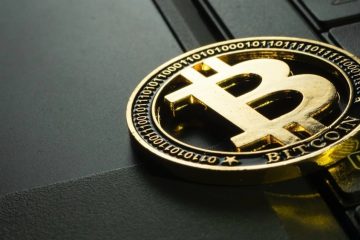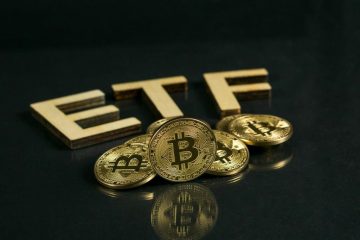The SEC Alleges That Some Binance Crypto Trading Was a Mirage

When crypto company Binance launched its U.S. exchange in 2019, almost $70,000 of bitcoin changed hands in the first hour. But the demand didn’t come from external traders. “That was ourself, I think,” Binance Chief Executive Changpeng Zhao said in an internal message viewed by The Wall Street Journal. Just how much crypto trading volume is due to actual trades versus exchanges and coin promoters shuffling assets among themselves is an issue for regulators and investors trying to gauge the depth of these markets. The issue revolves around what is known as “wash trading.”
This practice involves someone trading an asset with themselves or an affiliate. The result is that there isn’t economic substance to the trades, which can inflate both prices and trading volume. The U.S. outlawed wash trading for stocks and bonds nearly a century ago. Now, concerns about wash trading in crypto markets have mounted, especially since trading volumes have become a crucial marketing point for crypto exchanges to draw customers into an opaque market.
The Securities and Exchange Commission sued Zhao and Binance.US last month, alleging that a firm he controlled inflated trading volumes on the U.S. exchange. The agency alleges Binance.US inflated trading volumes by using dozens of user accounts held by Sigma Chain, a Swiss trading company controlled by Zhao and whose existence was earlier reported on by the Journal.
Binance CEO Changpeng Zhao faces Securities and Exchange Commission allegations that a firm he controlled inflated trading volumes on Binance.US. Photo: BENOIT TESSIER/REUTERS
The SEC didn’t specify who executed those trades. The regulator said several Binance employees conducted Sigma Chain’s operations under Zhao’s direction. The day after the platform was launched in September 2019, wash trading between Sigma Chain accounts and accounts owned by Zhao and senior employees constituted nearly 70% of trading volume for one token, the SEC alleged.
“We strongly believe that the SEC’s allegations regarding wash trading are entirely unfounded, and based on a fundamental misunderstanding of the facts and a misapplication of the relevant law,” a spokeswoman for Binance.US said. A spokeswoman for Binance, which was founded by Zhao, said neither the company nor Zhao has engaged in or tolerated wash trading. While crypto trades are tracked on a public database called blockchain, centralized exchanges run their own order books, matching buyers and sellers. The exchanges’ orders aren’t archived on the public domain and aren’t overseen by regulators.
Over 70% of trading volume on crypto exchanges came from wash trading, according to a study that will be published in the journal Management Science. The study was based on analysis of crypto trading volume in the second half of 2019. “Wash trading is a rampant, industrywide issue for the cryptocurrency market,” said Will Cong, a finance professor at Cornell University, and one of the study’s authors. “The fact that they’re faking so much trading is just appalling.”
The study estimated that wash trading would have lent to a fake volume of more than $6 trillion in the first quarter of 2020. U.S.-listed Coinbase, one of the few exchanges the professors deemed as regulated because of its New York license, didn’t show any signs of wash trading during that period, according to Cong. Coinbase settled with the Commodity Futures Trading Commission in 2021 after the regulator said that an exchange employee engaged in wash trading over six weeks in 2016.
The professors didn’t look into Binance’s U.S. arm given its late 2019 launch. But they did find that Binance, the larger, global exchange, wash-traded about 46% of its total volume. Binance’s spokeswoman said the exchange has a dedicated market-surveillance team that monitors activity to prevent that type of behavior. Internal Binance messages released by the SEC show Binance.US officials were aware the platform risked allowing wash trading from the beginning. A senior employee told the then-CEO of Binance.US, Catherine Coley, that the engine that matches trades could allow a user to trade with themselves.
“If some US compliance or regulation says we must prevent this, we will. Otherwise we will not,” the employee wrote to Coley in August 2019. A lawyer for Coley didn’t reply to requests for comment. More than a year later, another Binance.US executive told Coley that “[a]pparently we have nothing in place to prevent wash trading? Just tested myself, sold market order into my own bid.” Another Binance.US employee responded, “Yikes.”
The SEC said that Binance.US lacked any trade surveillance until at least February 2022, and that wash trading between Sigma Chain’s accounts went on through at least June of last year. That includes a period right before the exchange tapped outside investors for fresh funding in 2021. The Binance.US spokeswoman denied the allegations. “Our view is that these trades were entirely legitimate interactions involving independent strategies,” she said, adding: “The relative size of the trading activity does not support the suggestion that overall volume on the platform was affected.”
In the three months leading up to the funding round, Sigma Chain self-trading constituted well under 0.5% of the total trading on the platform, she said. The Justice Department is investigating Binance and Binance.US. Binance senior officials have resigned in recent weeks as the pressure from the federal investigations builds, the Journal has reported. Since the SEC lawsuit last month, Binance.US’s market share has dropped to a little more than 1%, according to data provider Kaiko.







